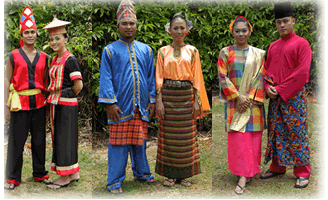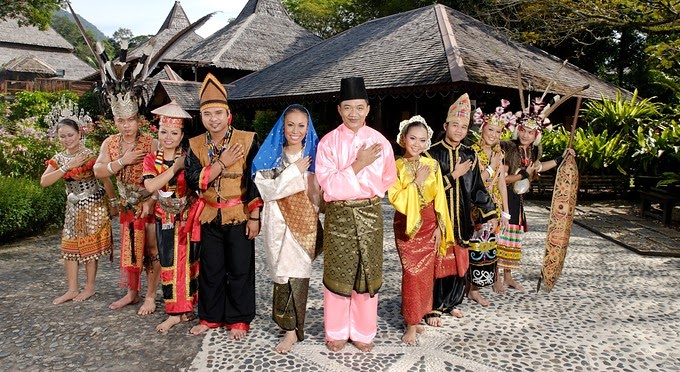
Interestingly, Bidayuh of different areas speak distinctively different dialects. Today, these longhouses and traditional abodes have been replaced with houses made of brick and mortar, although there are still some longhouses kept preserved such as those in Anah Rais and Bunuk in Penrissen, as well as Mongkos in Serian. But with the change of times, they began to move into individual houses made of wood or bamboo. Traditionally, the Bidayuh lived in longhouses, complete with a traditional roundhouse called Baruk, where they had community gatherings and special occasions. Today, the Bidayuh of Sarawak mainly live within Kuching, Serian, Lundu, Bau, Penrissen, Padawan and Siburan areas. (want to know about “Bau: Discover Bung Jagoi”) Bung Jagoi On May 1, 1838, Bung Bratak was attacked by hostiles from Skrang, forcing the villagers to flee and later establish a new settlement known as Bung Jagoi. It was once a vast settlement boasting seven longhouses built by the Bidayuh that migrated there from Mount Sungkong in West Kalimantan 700 years ago. A well-known site known to be the ancestral home of the Jagoi-Bratak sub-group of the Bidayuh of Sarawak is Bung Bratak, which translates as ‘Bratak Hill’. In fact, the name Bidayuh itself means ‘people of the land’.Īccording to history, the Bidayuh of Sarawak originate from Western Borneo. The Bidayuh people are also knowns as the Land Dayak. The WHO will then change its name to a Greek letter.ġ.Bidayuh is the second largest indigenous ethnic group in Sarawak after the Iban. If a subvariant (or variant) has features that distinguishes itself enough from other subvariants that make it better at reproducing, becoming transmissible or increasing its severity, then the World Health Organisation (WHO) might determine it to be a 'variant of concern'. As an example, BA.1, BA.2, BA.3, BA.4 and BA.5 are the first five branches of the original Omicron ancestor.īA.2.12.1 is the twelfth lineage to branch off from BA.2, and the first-named branch of that 'bush'. The numbers in the label indicate the order of branches from that lineage. These lineages so far would represent a subvariant of the dominant variant (in this case Omicron) and are labelled following in a sequence from A to Z, then from AA to AZ, BA to BZ, and so on. If they can be traced to a common recent ancestor, then they represent a distinct lineage of the virus. These samples are then studied to see how they fit on the SARS-CoV-2 family tree. Some new strains do gain traction and researchers conducting genomic surveillance flag samples that all have the same set of distinct mutations. So technically, this means millions of variants probably arise every day, but the vast majority of these mutations don't improve the virus' ability to survive and reproduce so they are eventually out-competed by more resilient versions. SARS-CoV-2, the virus behind Covid-19, replicates rapidly and each time it does it acquires mutations.

The World Health Organisation (WHO) has flagged BA.2.12.1 and BA.5 as highly infectious with faster transmission rates than the parent Omicron variant.īut how are these subvariants named and why aren't they given their own greek letter? "Subsequently, an additional case of BA 2.12.1 and three cases of BA.5 were detected in Kuching in the second and third weeks of June," he said in a statement on Thursday (June 23).

Universiti Malaysia Sarawak's Institute of Health and Community Medicine (IHCM) director Prof Dr David Perera said the first incidences of the BA.2.12.1 and BA.5 sub-variants were detected from a case in Kuching and Sibu respectively in the last week of May. The Omicron subvariant BA.2.12.1 was first detected in North America and accounts for 26% of samples sequenced there whereas BA.5 and its close sibling BA.4 are spreading rapidly in South Africa, comprising more than 90% of genomes sequenced there. These two subvariants are not entirely new as they have surfaced elsewhere, but they are new to Malaysia as they had not been detected here before.

What was actually detected in Sarawak were two Covid-19 Omicron subvariants, namely BA.2.12.1 and BA.5. THERE IS talk that a new and highly infectious Covid-19 variant has been discovered in Sarawak.


 0 kommentar(er)
0 kommentar(er)
